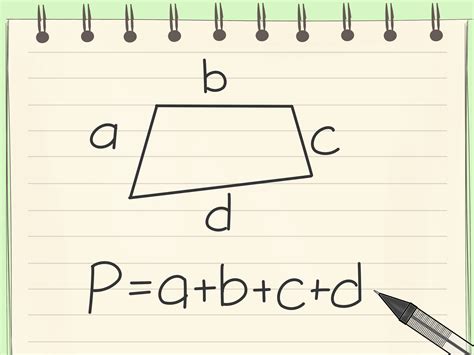How to Find Perimeter: A Complete Guide
Finding the perimeter is a fundamental concept in geometry and a crucial skill for various applications, from designing a garden to calculating the amount of fencing needed. This guide will walk you through different methods of calculating perimeter, catering to various shapes and scenarios. We'll cover everything from simple shapes like squares and rectangles to more complex polygons and even circles (using circumference).
Understanding Perimeter
The perimeter is the total distance around the outside of a two-dimensional shape. Imagine walking around the edges of a shape; the total distance you walk is its perimeter. This is a crucial measurement in many real-world applications, from construction and design to sports and games.
Calculating Perimeter for Common Shapes
Squares
A square has four equal sides. To find the perimeter of a square, simply multiply the length of one side by 4.
- Formula: Perimeter = 4 * side
Example: A square with a side length of 5 cm has a perimeter of 4 * 5 cm = 20 cm.
Rectangles
A rectangle has two pairs of equal sides. To find the perimeter of a rectangle, add the lengths of all four sides. Alternatively, you can use the formula: 2 * (length + width).
- Formula: Perimeter = 2 * (length + width)
Example: A rectangle with a length of 8 cm and a width of 4 cm has a perimeter of 2 * (8 cm + 4 cm) = 24 cm.
Triangles
Triangles have three sides. To find the perimeter of a triangle, add the lengths of all three sides.
- Formula: Perimeter = side1 + side2 + side3
Example: A triangle with sides of 3 cm, 4 cm, and 5 cm has a perimeter of 3 cm + 4 cm + 5 cm = 12 cm.
Other Polygons
For polygons with more than four sides (pentagons, hexagons, etc.), the perimeter is found by adding the lengths of all its sides. There isn't a single formula; the approach remains consistent: sum all sides.
Circumference of a Circle (Perimeter of a Circle)
While not strictly a polygon, a circle also has a perimeter, which is called its circumference. The circumference is calculated using the following formula:
- Formula: Circumference = 2 * π * radius or π * diameter
Where:
- π (pi) is approximately 3.14159
- Radius is the distance from the center of the circle to any point on the circle.
- Diameter is twice the radius (diameter = 2 * radius).
Example: A circle with a radius of 7 cm has a circumference of approximately 2 * 3.14159 * 7 cm ≈ 43.98 cm.
Tips and Tricks for Finding Perimeter
- Always use the same units: Ensure all measurements are in the same units (cm, meters, inches, etc.) before calculating the perimeter.
- Draw a diagram: For complex shapes, drawing a diagram can help visualize the problem and ensure you've included all sides.
- Break down complex shapes: If you have a complex shape, break it down into simpler shapes (rectangles, triangles, etc.) to calculate the perimeter of each part and then add them together.
- Use a calculator: For calculations involving pi or larger numbers, using a calculator will ensure accuracy.
By understanding these methods and practicing, you'll become proficient in calculating the perimeter of various shapes. Remember, mastering perimeter calculation is a building block for more advanced geometric concepts.
